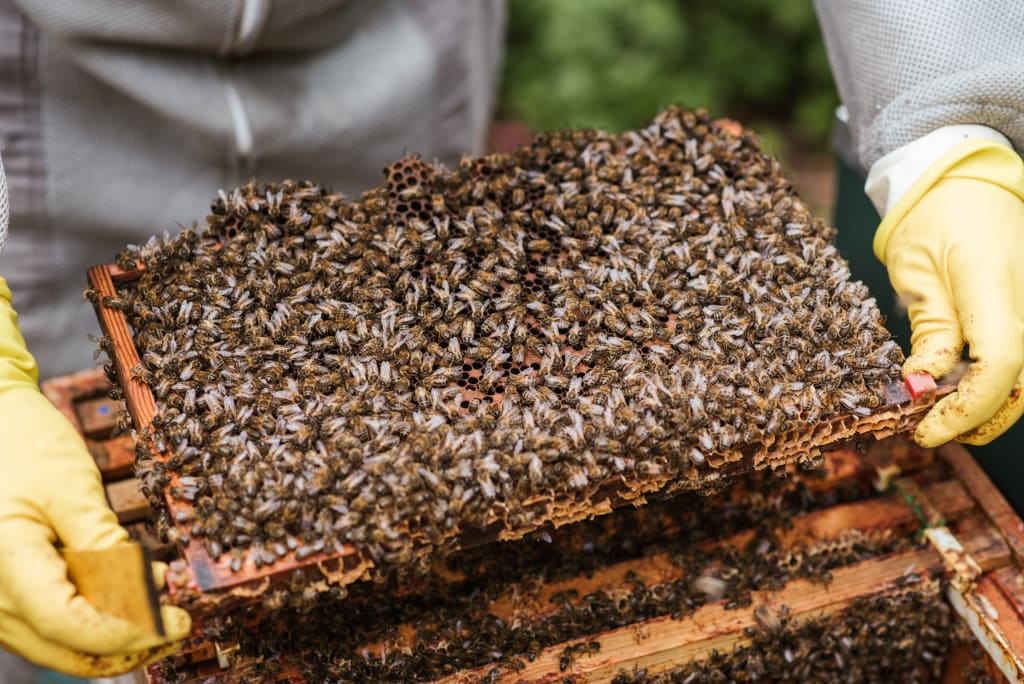
Introduction:
While dining al fresco on a warm summer day, we often find ourselves sharing our meals with some uninvited guests – bees. While they may not be our favorite part about eating outdoors, these industrious insects are vital to our ecosystem. Bees, nature's prolific pollinators, play a crucial role in modern agriculture, ensuring the growth of many of the foods we rely on. Unfortunately, these buzzing heroes are facing a dire threat. Scientists exploring the fascinating world of symbiosis may have stumbled upon a discovery that could revolutionize our understanding of bees and their ecosystems. This microscopic realm, which was previously hidden from us, is the focus of the eye-opening documentary "Symbiosis" by Day's Edge Productions.
The Bee-Plant Mutualism:
Bees have been buzzing around for over 100 million years, diligently aiding plants in reproduction. In essence, they share a mutually beneficial relationship with plants: bees collect pollen to feed their young, and in return, they facilitate the pollination of plants. This partnership between bees and plants has been essential for both their survival and the diversity of our natural world.
The World of Wild Bees:
When we think of bees, we often conjure images of honeybees. However, honeybees are not native to North America and were introduced centuries ago by European colonists. The continent was already teeming with native bee species, with over 4,000 distinct varieties. Some of these native bees are vital crop pollinators, while others play an equally crucial role in pollinating native wildflowers and plants.
Solitary Ground Nesting Bees:
The majority of North America's bee population consists of solitary ground nesting bees. These bees, unlike their hive-dwelling cousins, construct their own brood cells, gather pollen and nectar, and raise their offspring independently. This solitary lifestyle has allowed them to coexist harmoniously with the native flora, contributing to the rich diversity of bees in North America.
The Bee Decline Mystery:
In recent years, native bee populations have been dwindling across the continent, raising concerns among researchers and environmentalists alike. The culprits behind their declines have proven elusive. One potential suspect that caught scientists' attention was fungicides, which are commonly used in agriculture to combat fungal diseases in crops.
Fungicides and Bee Health:
Initially, it was puzzling to link fungicides to bee health, as these chemicals had been deemed safe for adult bees. However, a group of researchers began to investigate whether fungicides affected bees indirectly by disrupting the delicate balance of the brood cell ecosystem.
Inside the Brood Cell Ecosystem:
Inside the sealed brood cells, where bee larvae develop, a fascinating and complex ecosystem exists. Microbes, including bacteria and fungi, are introduced by mother bees alongside pollen and nectar. These microbes play an integral role in the development of bee larvae, but their significance was only recently uncovered.
The Role of Microbes:
Microbes serve as more than just a food source within the brood cell. They help digest tough pollen grains and may neutralize plant defensive chemicals present in the pollen and nectar. Removing these crucial microbes can lead to devastating consequences for developing bee larvae.
The Hidden Menu of Bee Larvae:
Analyses of bee larvae revealed that they are not strict herbivores as previously believed. Instead, they are omnivorous, consuming a substantial portion of microbial "meat" present in the brood cell. This discovery challenges our understanding of bee nutrition and emphasizes the importance of microbial communities within the brood cell.
Fungicides' Impact on Microbes:
Fungicides, often used in agriculture, were found to be a threat to bees indirectly. While they may not harm adult bees, fungicides disrupt the microbial communities within brood cells, leaving larvae starving and unhealthy.
Toward Sustainable Solutions:
The solution to protecting native bees while safeguarding our food supply doesn't lie in abandoning fungicides altogether. Instead, researchers propose using less harmful fungicides and adjusting application methods to minimize harm to bee populations.
Conclusion:
The hidden world of bees and their symbiotic relationship with microbes offers a fascinating insight into the complex web of life that sustains our planet. Recognizing the critical role of microbes in bee health may hold the key to preserving these vital pollinators and the diverse ecosystems they support. As we continue to explore and understand this hidden microbial world, we must work towards sustainable agricultural practices that protect both our crops and the invaluable bees that sustain them.
About the Creator
Edwin
Hi am Edwin.... thanks for visiting my page






Comments (1)
Come to the jungles of Cambodia where you can always enjoy some fresh honey! You may enjoy the following: https://vocal.media/longevity/5-simple-ways-to-boost-your-immune-system-c5cz0wom Thanks for sharing.